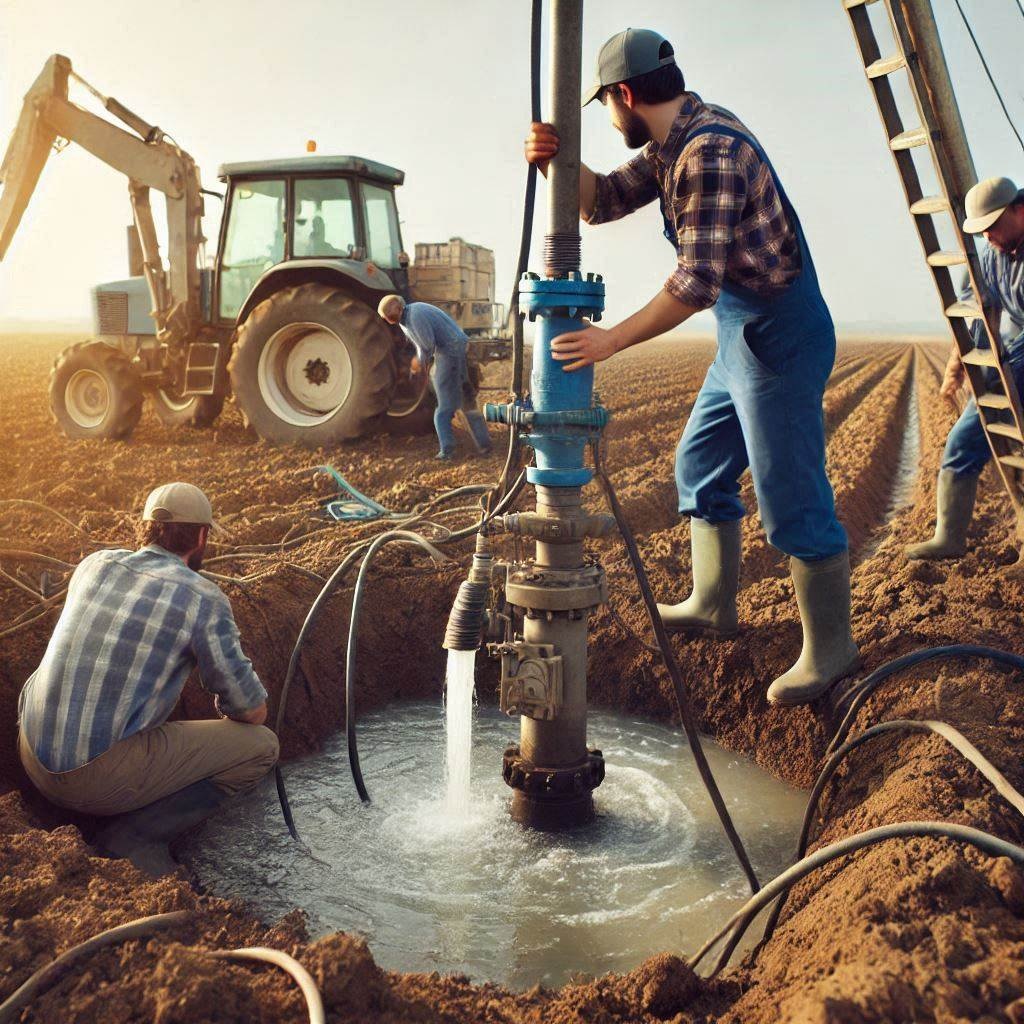
Submersible pumps are used for pumping water from greater depth to bring the ground water from beneath to surface. These pumps are designed specifically to sustain the submerged conditions and ensure safety against corrosion and compressive force of the rocks, or soil. Submersible pumps are widely used in the deep wells and boreholes as well as the sewage systems or water treatment plants for lifting fluids efficiently from below depths. Cavitation is highly impossible, along with energy losses due to submerged designs of such pumps, offering quieter operation; thus, this makes them essential for agricultural irrigation, industrial procedures, and municipal water supply applications.
Main constituents of Submersible pumps:
The main components of submersible pump is motor, impeller, pump casing, shaft, and mechanical seal. These components are mounted on water resistant, corrosion free material to ensure that they stay unaffected in submerged condition as well. The impeller moves the fluid by changing the mechanical energy supplied by the motor into kinetic energy, thus producing flow and pressure. It encases the impeller and guides the fluid flow with maximum efficiency. The rotor connecting the motor is mounted to the impeller; it makes possible smooth power transfer. Mechanical seals with O-rings give a watertight seal to keep fluid out of the motor and other critical areas. Thus, from durability to operational reliability in submerged conditions, these submersible pumps ensure such.
Working principle of Submersible pumps and science behind it:
Submersible pumps change mechanical energy to hydraulic energy so that fluids move with efficiency. They are wholly immersed in fluid for pumping purposes and use the hydrostatic pressure to their advantage. From the motor, where the impeller is set by the force of centrifugal force, pushes fluid outwards, thereby increasing velocity. The interior fluid presses in this poor pressure area of the pump, which makes them continuous flow. The pump casing then directs the fluid to the outlet with increased pressure. The science behind this involves Bernoulli’s principle and the concept of centrifugal force, where fluid dynamics and pressure differences work together to achieve efficient fluid movement, even from great depths.
Applications and uses of Submersible pumps
Submersible pumps are one of the widely used versatile pumps for many industries because they can function effectively underwater. In agriculture, it is applied in irrigation in order to drain off the water from the flooded fields. It is applied in homes in pumping the water up from their well, sumps, or basements so that it does not flood. Likewise, it can be used to dewater a construction site or to extract ground water or oil from deep reservoirs. Sewerage treatment plants also employ dewatering of sewage. Besides this, such pumps are highly important in the municipal water supply systems where the water is pumped over long distances without any loss of continuity. Their submerged workability along with energy efficiency and reliability makes it highly useful for various applications, including deep well pumping and underwater drainage.
How to choose a reliable submersible pumps manufacturers?
The choice of a reliable Submersible pumps Manufacturer is very important because it will yield the quality pump that will stay for a very long time, giving good performance. Begin by considering the reputation of the manufacturer from customer reviews, testimonials, and certifications that may exist, such as ISO standards. Find a manufacturer that has different types of pumps suited for different applications, ranging from agricultural to industrial. The products should have corrosion-resistant parts and energy-efficient designs. After-sales support is available in the warranty terms, maintenance services, and spare parts. The companies that have more developed production facilities, international quality standards, and proven experience in designing rugged submersible pumps are likely to deliver products that meet your requirements.
Conclusion
In conclusion, submersible pumps have revolutionized fluid management in various fields of operation with unmatched efficiency and reliability for underwater applications. Its design, which permits fully submerged operations, minimizes energy loss while providing superior performance under difficult conditions. They have a varied application – from agricultural and residential water supply to industrial and municipal uses, hence they become a tool with which fluid transfer and management cannot be conceived. And with an understanding of the key elements of selection criterion and its working principles, the users will be able to take decisions to operate it most efficiently. Submersible pumps have thus become an essential part of modern fluid-handling systems for industries looking for efficient and sustainable solutions.





Leave a Reply